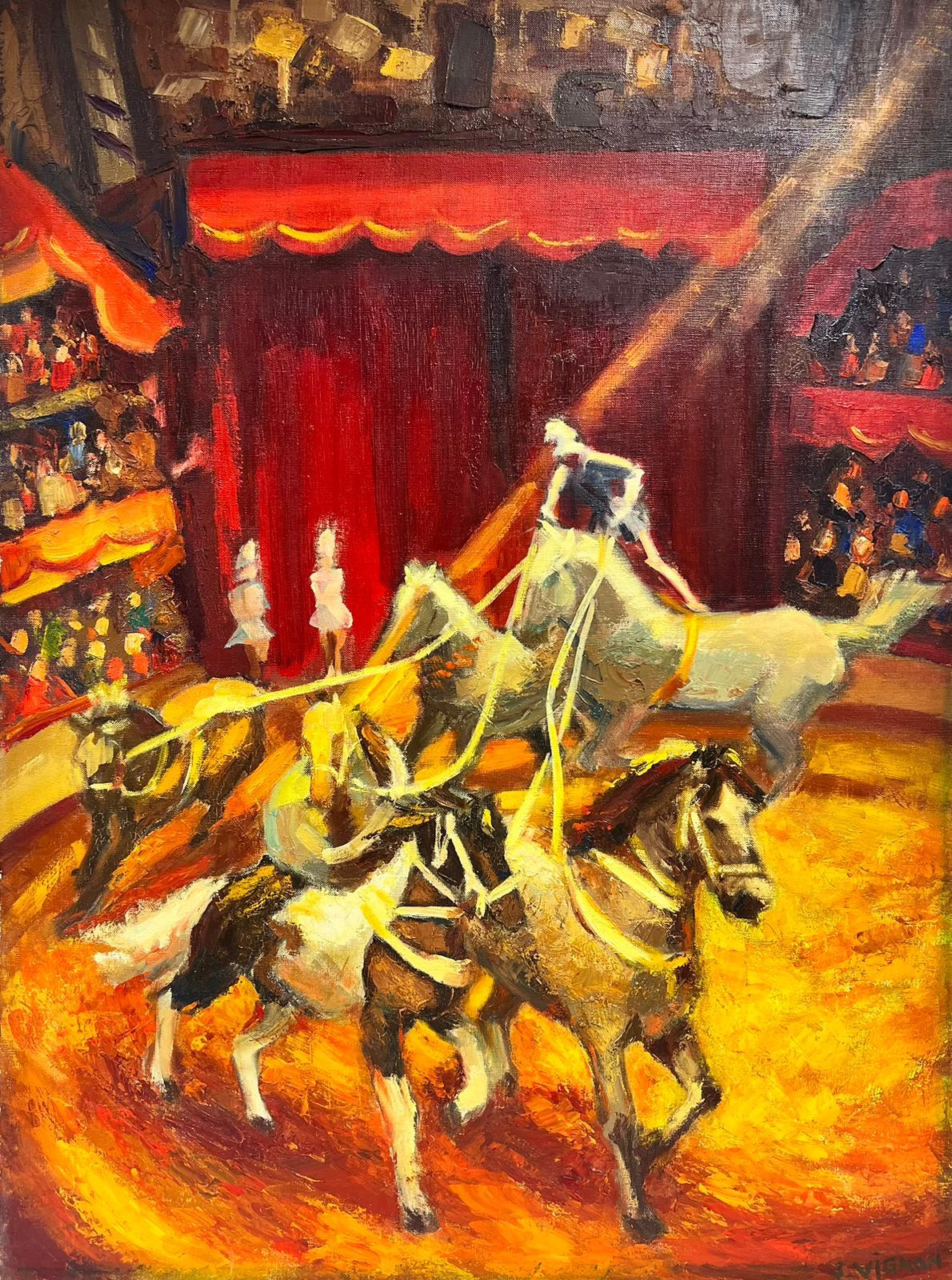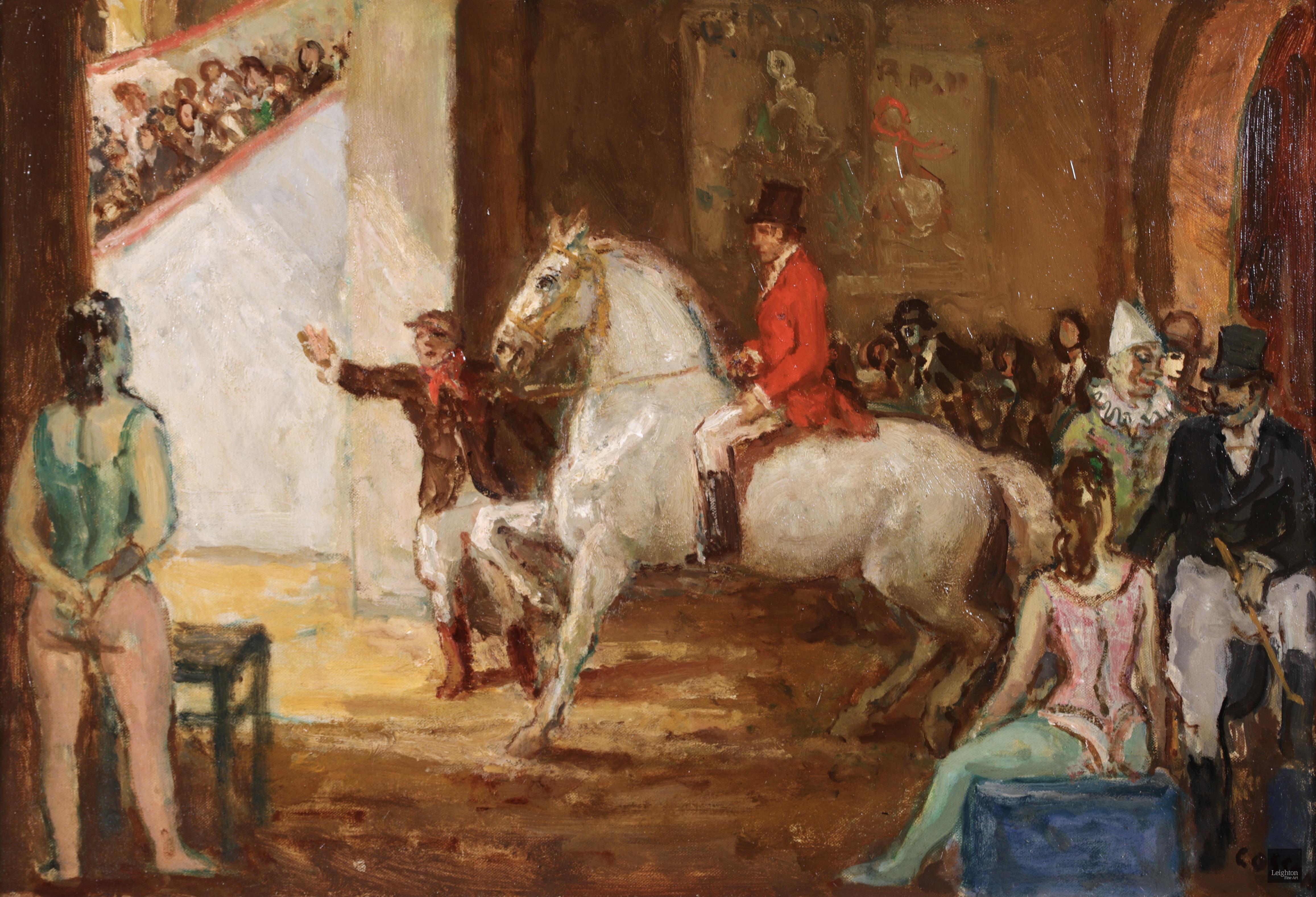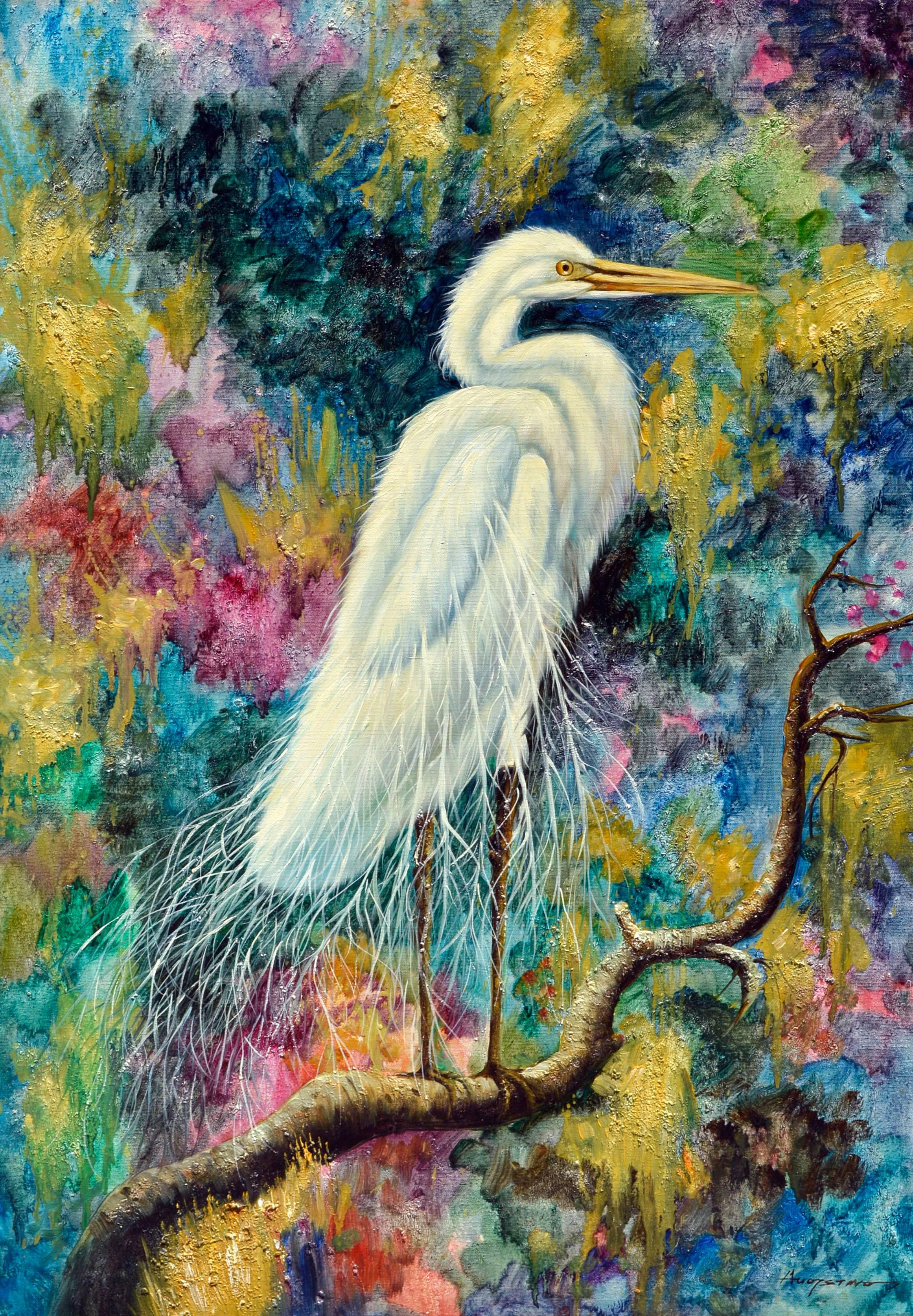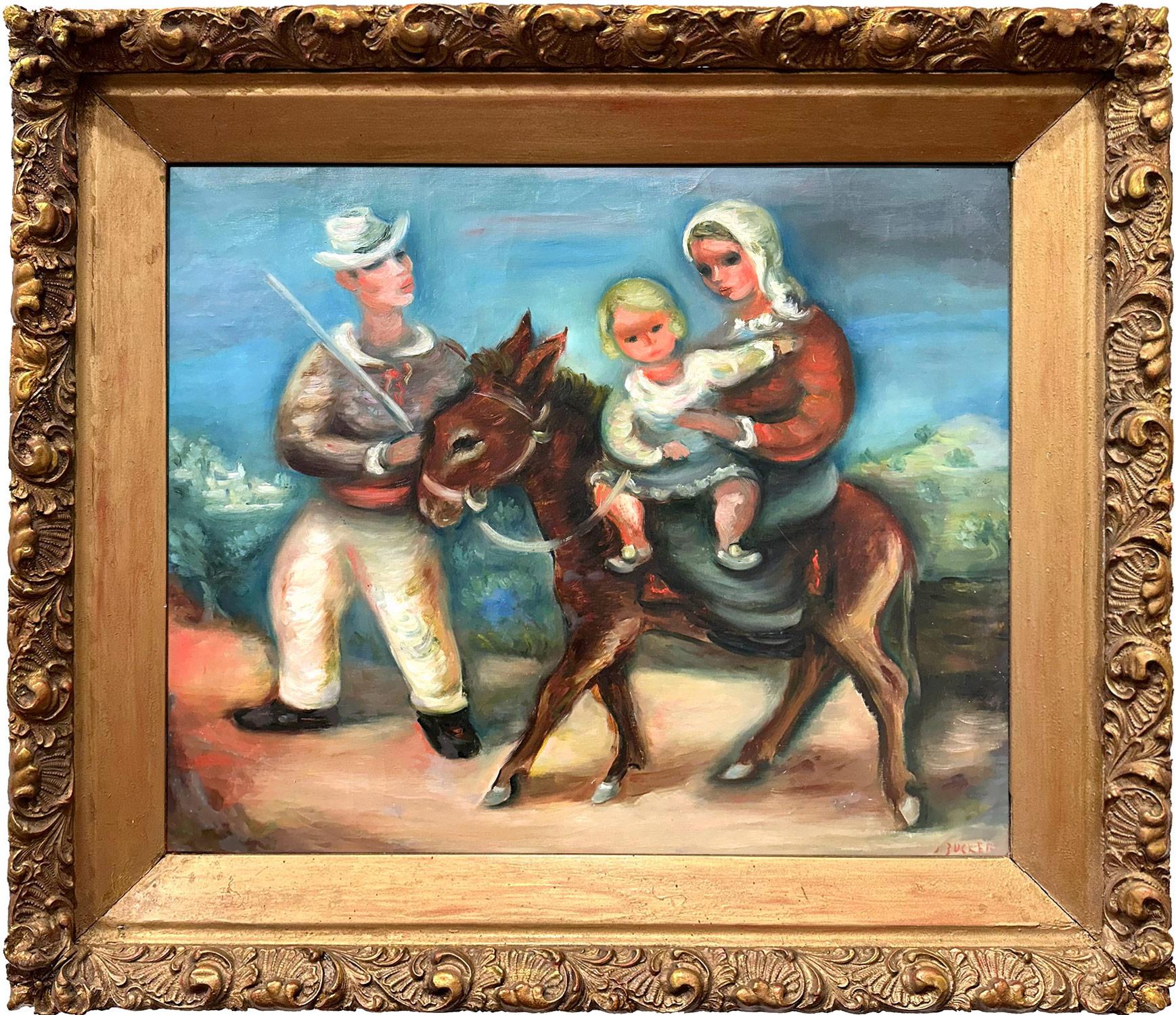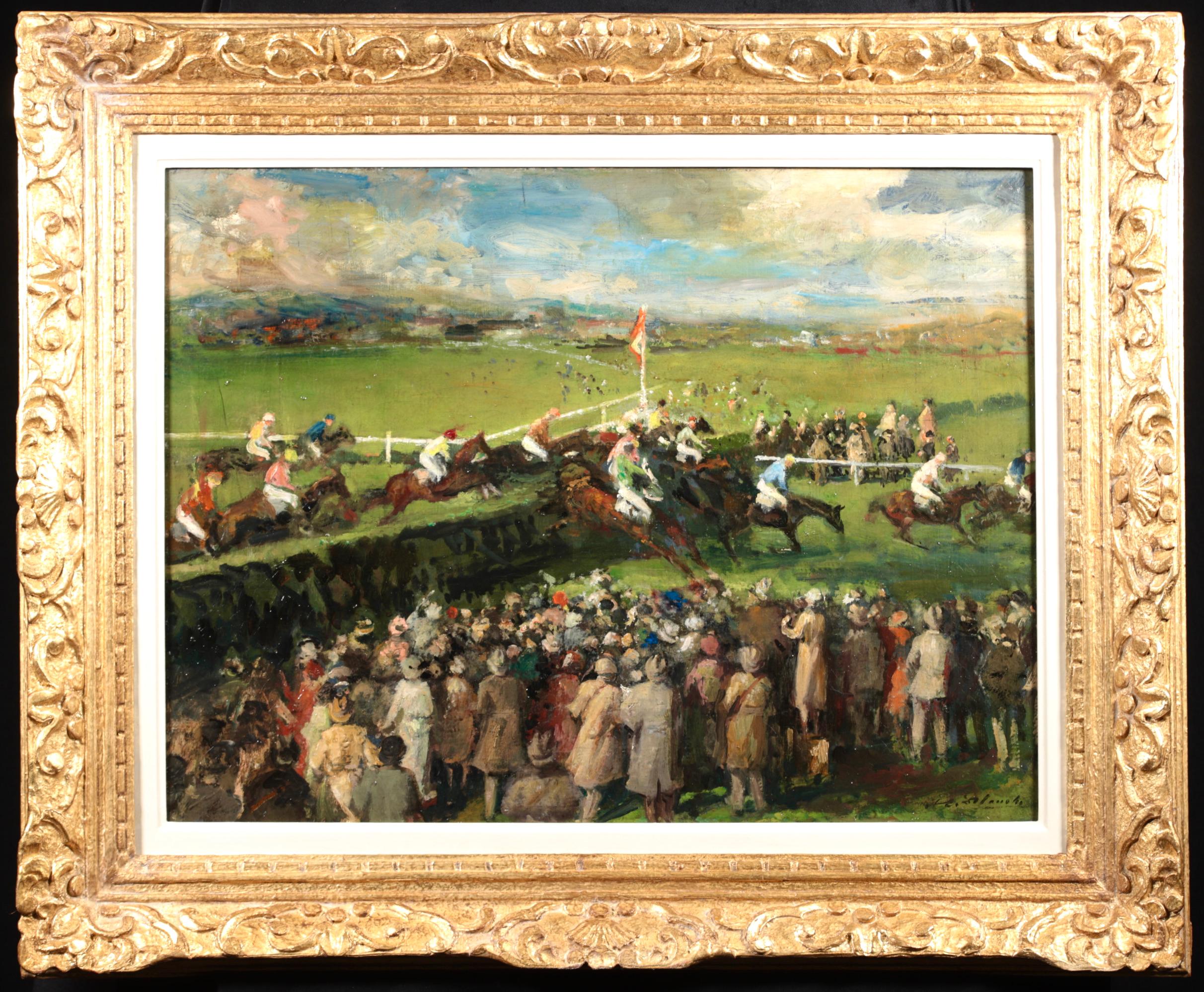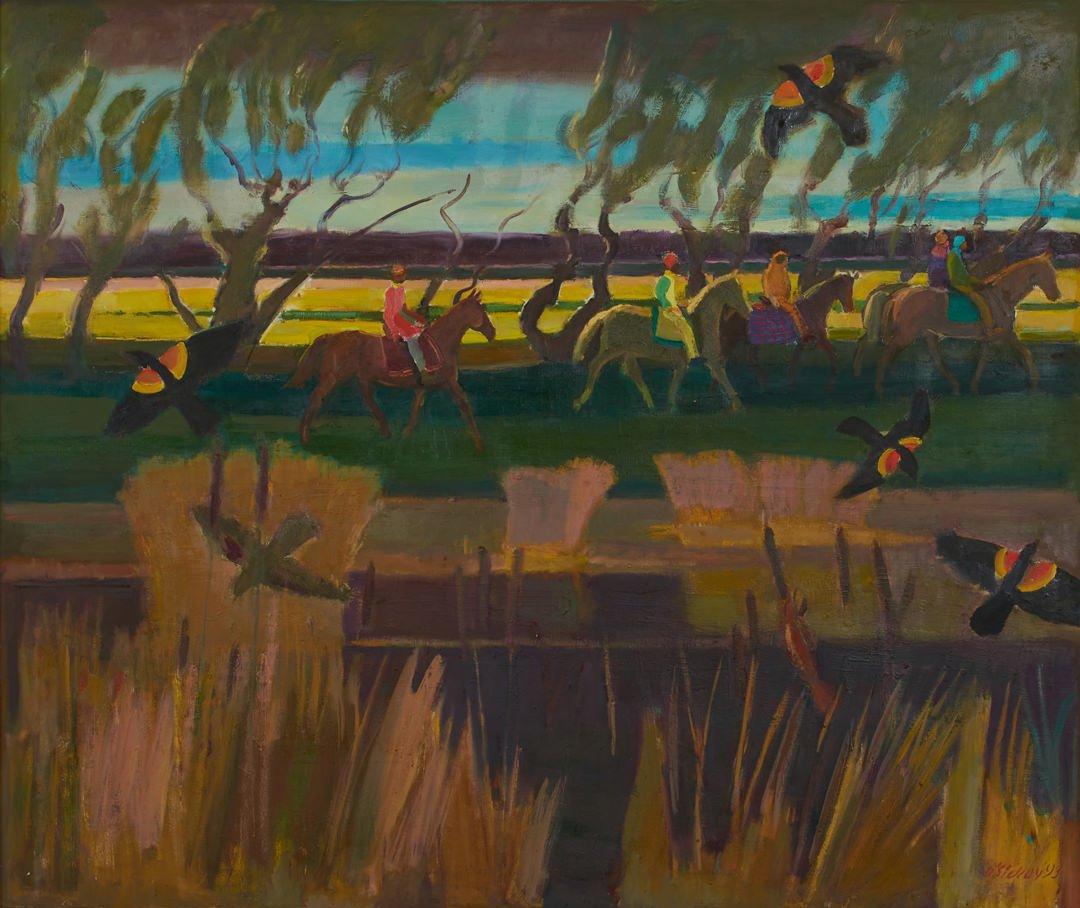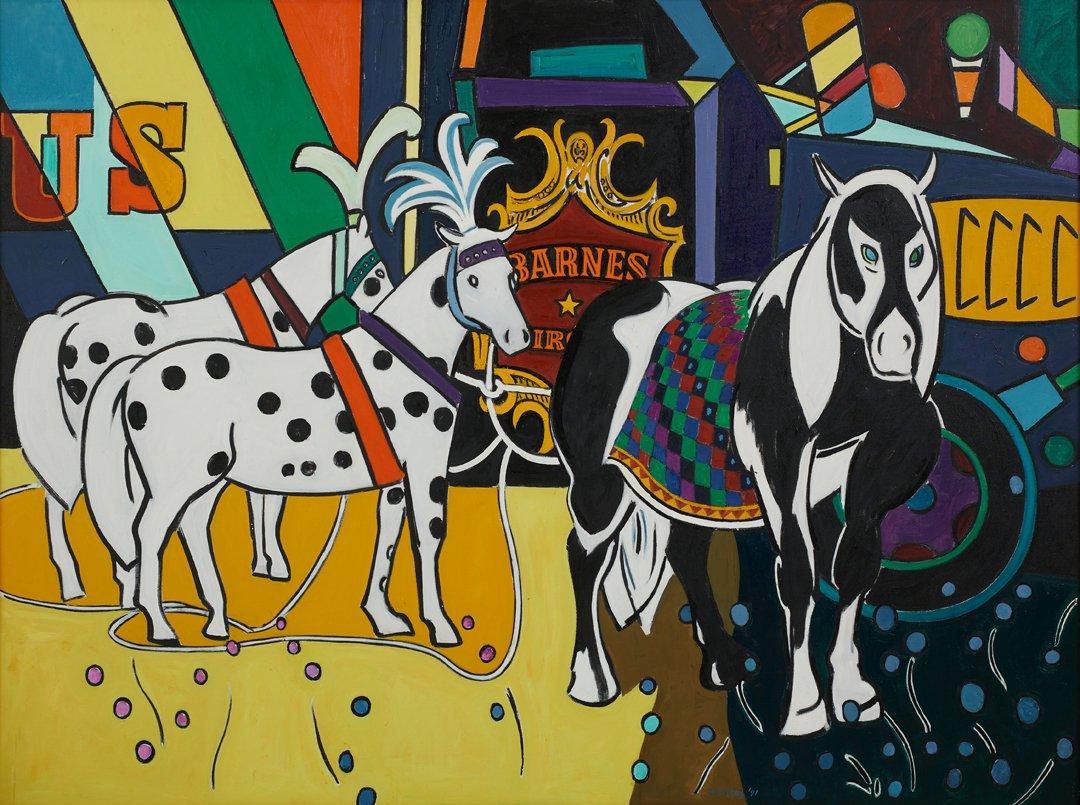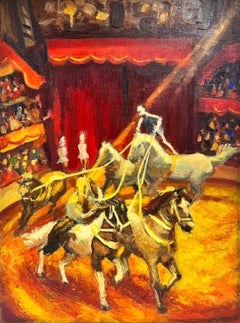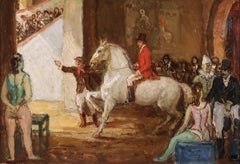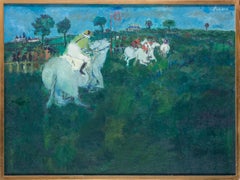
French, 20th Century oil painting of horse racing painted in vivid greens
View Similar Items
Want more images or videos?
Request additional images or videos from the seller
1 of 11
Jean FusaroFrench, 20th Century oil painting of horse racing painted in vivid greens
About the Item
- Creator:Jean Fusaro (1952)
- Dimensions:Height: 23.75 in (60.33 cm)Width: 32 in (81.28 cm)Depth: 1 in (2.54 cm)
- Medium:
- Movement & Style:
- Period:
- Condition:In good condition. Minor frame abrasions. Slight surface dirt, very good impasto throughout. Not relined. In a simple gilded frame.
- Gallery Location:Petworth, GB
- Reference Number:1stDibs: LU54033777591
About the Seller
4.9
Platinum Seller
These expertly vetted sellers are 1stDibs' most experienced sellers and are rated highest by our customers.
Established in 2010
1stDibs seller since 2017
225 sales on 1stDibs
Typical response time: 3 hours
More From This SellerView All
- Scottish 20th Century naive oil painting of figures, dogs and birds in interiorLocated in Petworth, West SussexCatriona Millar (Scottish, b. 1956) Veva’s Guest Oil on canvas Signed with initials (lower left) 19.5/8 x 15.5/8 in. (50 x 39.7 cm.) Catriona Millar (born 1956) is a Scottish figura...Category
20th Century Folk Art Figurative Paintings
MaterialsOil, Canvas
- Scottish 20th Century naive oil painting of figures, dogs and birds in interiorLocated in Petworth, West SussexCatriona Millar (Scottish, b. 1956) Holiday Oil on canvas Signed with initials (lower left) 19.5/8 x 15.5/8 in. (50 x 39.7 cm.) Catriona Millar (born 1956) is a Scottish figurative ...Category
20th Century Folk Art Figurative Paintings
MaterialsOil, Canvas
- British, early 20th Century oil painting of a shepherd returning home at sunsetLocated in Petworth, West SussexOwen Baxter Morgan (British, fl. 1905 – 1932) Returning home at sunset Oil on canvas Signed in capitals ‘BAXTER MORGAN’ (lower right) 14 x 21 in. (3...Category
20th Century Impressionist Figurative Paintings
MaterialsCanvas, Oil
- 'The Cats of St. Ives' scene by British female artist Anne Harriet Sefton FishLocated in Petworth, West SussexA beautiful painting of cats and fisher folk in St. Ives, early 20th Century by female artist Anne Harriet Sefton Fish. Anne Harriet Sefton Fish (British, 1890 - 1965) The Cats Of S...Category
20th Century Modern Animal Paintings
MaterialsWatercolor, Pencil
- French Post Impressionist oil painting of cows grazing in France-Comte, FranceLocated in Petworth, West SussexCharles Wittmann (French, 1876 – 1953) Cows grazing in Franche-Comte Oil on board Signed ‘CH. WITTMANN’ (lower right) 21.1/4 x 36.3/8 in. (54 x 92.5 c...Category
20th Century Post-Impressionist Animal Paintings
MaterialsOil, Board
- 1960 Post Impressionist painting of lady arranging bananasLocated in Petworth, West SussexA very striking original Post-Impressionist oil painting of a lady arranging bananas Jean Dulac was born on Bourgoin but from the age of 5 became a lifelong resident of Lyon. His f...Category
20th Century Post-Impressionist Figurative Paintings
MaterialsOil, Canvas
You May Also Like
- “Paddock, 1961”, 20th Century Oil on Canvas by Spanish Artist Emilio Grau SalaBy Emilio Grau SalaLocated in Madrid, ESEMILIO GRAU SALA Spanish, 1911 - 1975 PADDOCK, 1961 signed "Grau Sala" (lower right) signed again, titled & dated "GRAU SALA / PADDOK / 1961" (on the reverse) oil on canvas 21-3/8 x ...Category
1960s Post-Impressionist Figurative Paintings
MaterialsCanvas, Oil
- The Circus Horses Large French Post Impressionist Oil Circus Ring Interior SceneLocated in Cirencester, GloucestershireThe Circus by Josine Vignon (French 1922-2022) signed oil painting on canvas, unframed canvas: 32 x 24 inches Very good condition Provenance: from th...Category
Mid-20th Century Post-Impressionist Animal Paintings
MaterialsOil, Canvas
- Au Cirque - Post Impressionist Oil, Figures & Horse at Circus by Marcel CossonBy Jean-Louis-Marcel CossonLocated in Marlow, BuckinghamshireSigned oil on board circa 1930 by French post impressionist painter Jean-Louis-Marcel Cosson. The piece gives a behind the scenes look at a French circus. The ringmaster, dressed in ...Category
1930s Post-Impressionist Figurative Paintings
MaterialsCanvas, Oil
- The Fauvist White EgretBy AugostinoLocated in Soquel, CAFauvist style White Egret by Augostino (American, 20th Century). Modernist/Realist adaptation of a familiar theme. One small tear repaired professionally. ...Category
1970s Fauvist Animal Paintings
MaterialsCanvas, Oil
$1,480 Sale Price20% Off - "The Holy Family" Post-Impressionist Pastoral & Figures Oil Painting on CanvasBy Jacques ZuckerLocated in New York, NYA charming oil painting depicting a classical religious scene of the Holy Family journey done in a highly impressionistic manner with unique colors and expressions with the use of br...Category
20th Century Post-Impressionist Figurative Paintings
MaterialsOil, Canvas
- At the Races - Post Impressionist Horses & Figures Oil by Jacques-Emile BlancheBy Jacques Emile BlancheLocated in Marlow, BuckinghamshireSigned post impressionist horses and figures in landscape oil on canvas by French painter Jacques-Emile Blanche. The work depicts crowds of people enjoying a day at the races and watching a steeplechase horse race as the horses and their jockey's jump a fence. Signature: Signed lower right Dimensions: Framed: 28"x36" Unframed: 21"x29" Provenance: Private French collection. This work has been authenticated by Dr Jane Roberts and a certificate of authenticity will accompany the painting. Blanche received training from Gervex and Fernand Humbert. His grandfather was Émile Antoine Blanche, the psychiatrist who treated the poet Gérard de Nerval on several occasions. He was awarded a gold medal at the Exposition Universelle in Paris in 1900, and was a Commander of the Légion d'Honneur. He was well known in French and British artistic circles, and married the daughter of John Lemoine, the leader of the Diary of the Proceedings ( Journal des Débats), and author of the Life of Brummel. He exhibited his works in London and Paris. Blanche had a wide circle of acquaintances, and the list of portraits which he executed is indicative of the diversity of those who used to meet at his home: Henri Bergson; Stéphane Mallarmé; Henry Bernstein (1902); André Gide (1912); Anna de Noailles (1912); Jean Cocteau (1912); Igor Stravinsky (1915); Francis Jammes (1917); Paul Claudel (1919); Jean Giraudoux; Paul Valéry; Marcel Proust; Max Jacob (1921); Maeterlinck (1931); Debussy; Antoine Bourdelle; George Moore; André Maurois; François Mauriac; Maréchal Foch and the Princess de Broglie. He also wrote novels, which were more or less autobiographical, and essays, such as From David to Degas; Dates; From Gauguin to the Negro Review; Journals of an Artist ( De David à Degas; Dates; De Gauguin à la Revue nègre; Cahiers d'un artiste) in six volumes, and Manet. During meetings at his studio, he used to collect any snippets that would flesh out the essays he wrote, which alternated between being sharp and emotive. He gave them in series to the magazine Comoedia, under the title of Studio Talk. It was said that he aroused tremendous debate, notably with André Lhote, a painter younger than himself, who also doubled as a critic. The latter initially attempted to define the main characteristics of the art of the 'rebellious and charming Jacques Émile Blanche,' but subsequently treated him less generously, referring to a painter 'attached to the notion of 'high-and-mighty' genre painting.' He added that this sort of painting was marvellously illustrated by Manet. The quality of his flat surfaces, the precious greys and silvery light effects cause Jacques Émile Blanche to be compared more with Manet, whom he admired, than with the Impressionists, with whom he was compared in terms of his early works. Nevertheless, his outdoor backgrounds with traces of sometimes vivid colours have something in common with them. In the aftermath of World War I, he spent a long time on an enormous composition entitled Tribute to those who Died in the War. It was executed in a style which was totally different to his work as a whole. He offered this work to the church in Offranville near Dieppe. He also donated around 100 of his works to the Musée des Beaux-Arts in Rouen. He regularly exhibited in Paris, at the Salon of the Société Nationale des Beaux-Arts (also known as the Salon de Mars) from the time it was founded in 1890. At the time of the initial exhibitions held by the Société Nationale des Beaux-Arts, he rapidly gained fame by exhibiting such portraits as Paul Adam and Charles Cottet. He sometimes grouped together several members of the same family in one painting: The Painter Thaulow and His Family in 1895, The Vielé-Griffin Family, and numerous refined portraits of key figures in France and England. Apart from this Salon, for which he was one of the first driving forces and founder members, he was later to put in a great deal of effort on the occasion of the Salon des Tuileries between 1933 and 1939, even though he was by then in his seventies and already famous. He exhibited genre scenes, scenes of fashionable places - like Brighton or Dieppe - and racecourse scenes at the Salon des Tuileries in 1933. These included Family of Pedlars in London; Portrait of the Female Novelist Sylvia Thompson; Racecourses in Ireland; Arrival of the Herring in Dieppe; White Masts; Brighton; in 1934: Portrait of James Joyce; Grand National Steeplechase; Spring Races in England (sketch); Dieppe Beach; Outer Harbour of Dieppe in Autumn; in 1935: Rugby; Walter Richard Sickert; Dieppe; Tea Party at the Madeleine; in 1939: Love Thy Neighbour. Many exhibitions have been dedicated to him since his death, including one at the Musée des Beaux-Arts in Rouen in 1997, and one at the Galerie Philippe Heim in Paris in 1999. Museum and Gallery Holdings: Brussels: Portrait of the French Painter Charles Cottet Dieppe: Sleeping Child; Fish Week Dijon: General Mangin; The Sailing Ship London (Tate Collection): Francis Poictevin (1887, oil on canvas, portrait); Charles Conder (1904, oil on canvas, portrait); Ludgate Circus: Entrance to the City (November, Midday) (c. 1910, oil/panel); August Morning, Dieppe Beach (c. 1934, oil on canvas); other paintings Lyons: Portrait of Debussy Mulhouse: Begonias Paris (Louvre): The Painter Thaulow and his Family (1895) Paris (MAM): The Pink Room; The Port at Le Havre; Flowers in a Vase; Still-life; Portrait of the Artist's Mother (June 1895); Portrait of Igor Stravinsky Paris (Mus. Carnavalet): Portrait of Jean Cocteau...Category
Mid-20th Century Post-Impressionist Animal Paintings
MaterialsOil, Canvas
